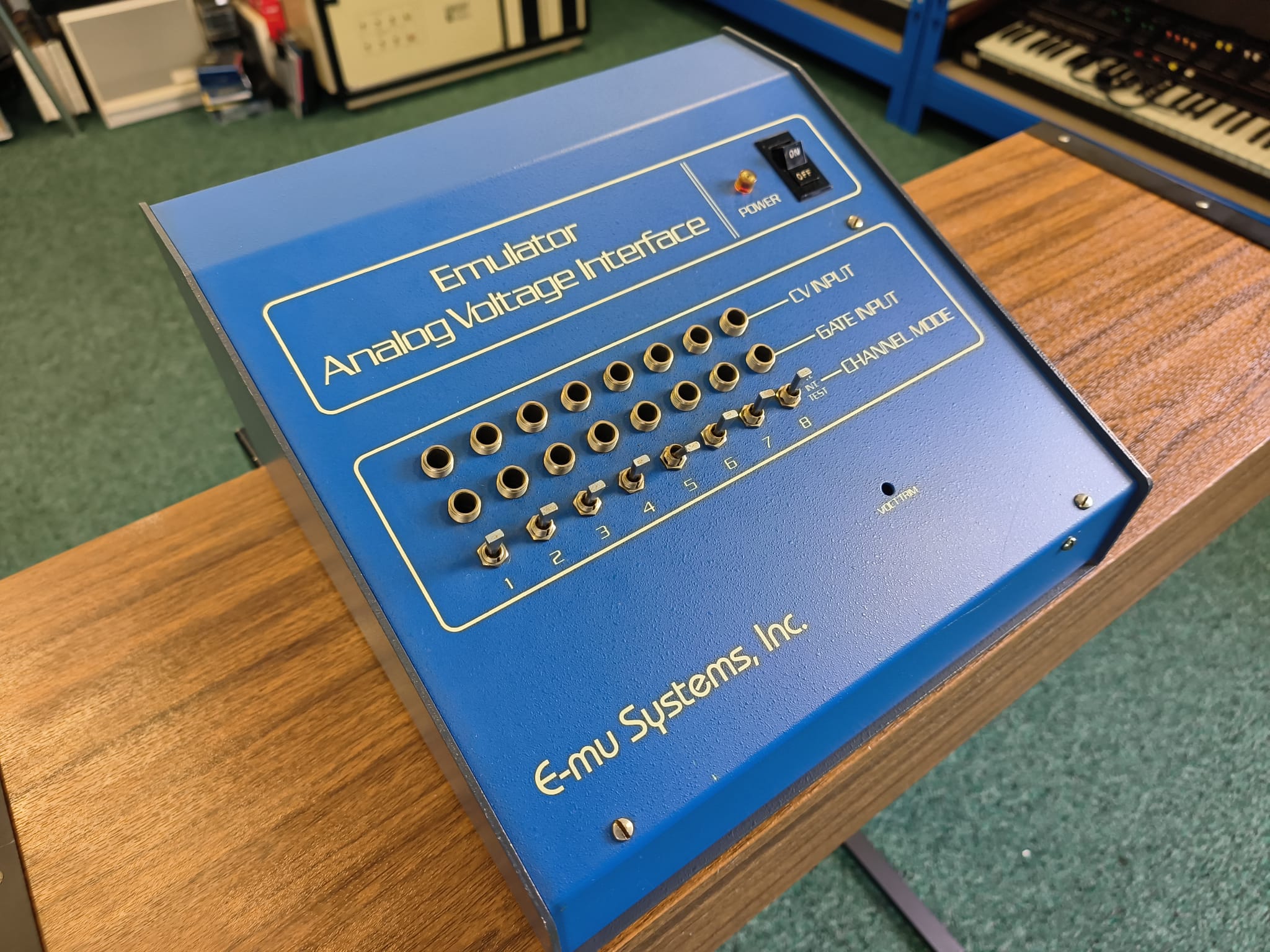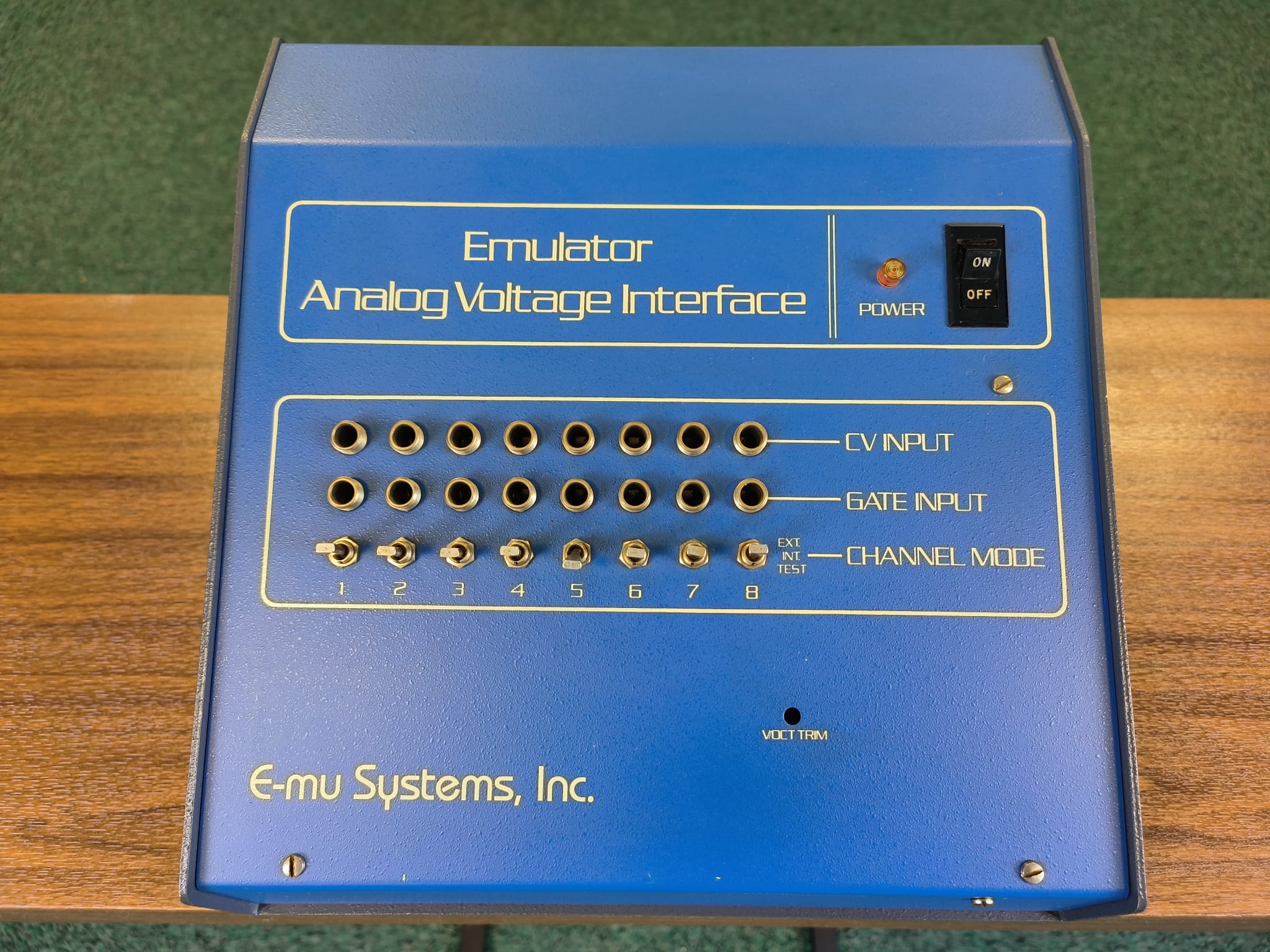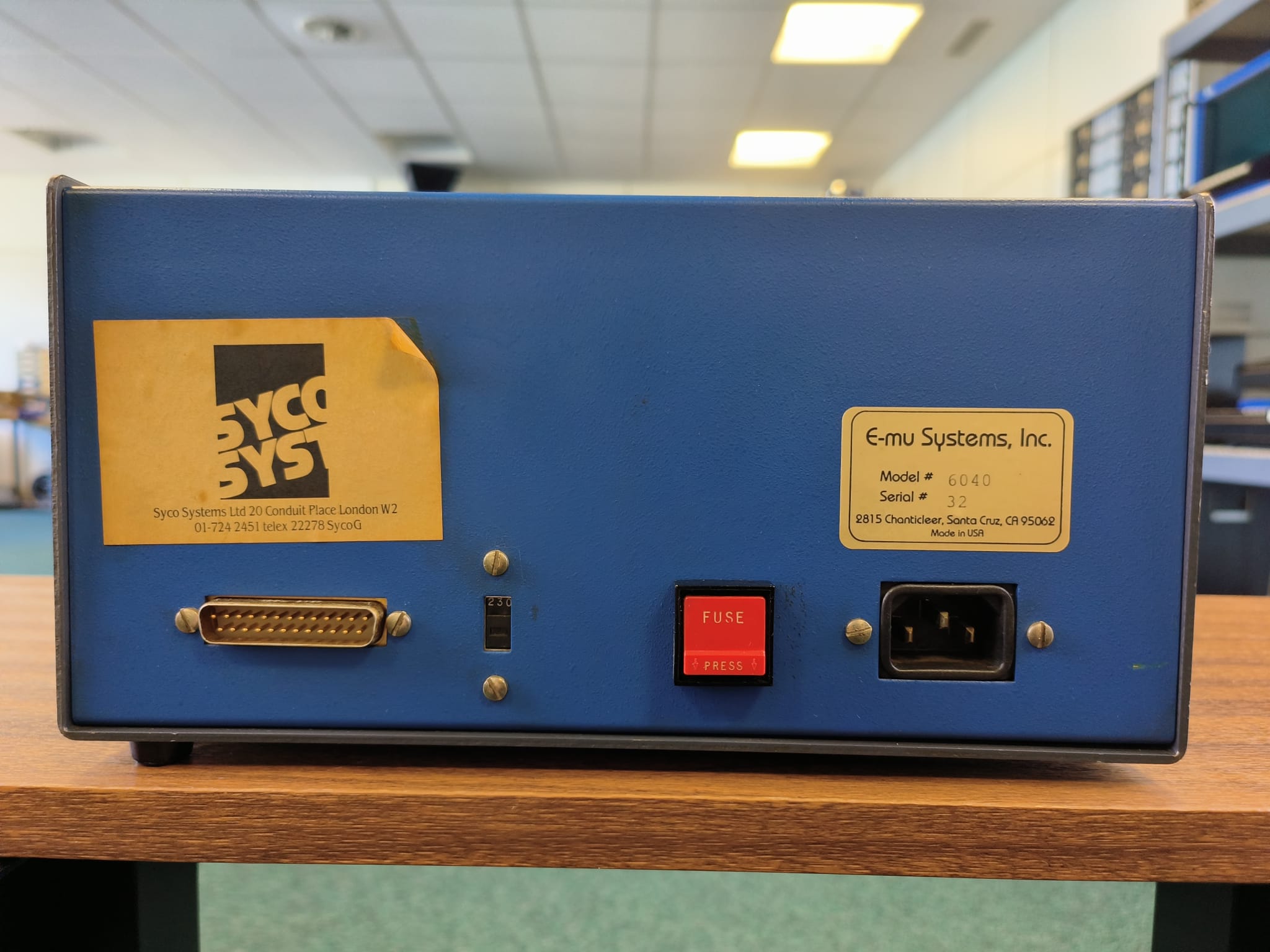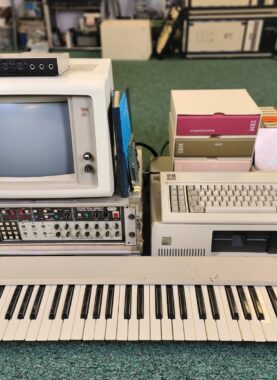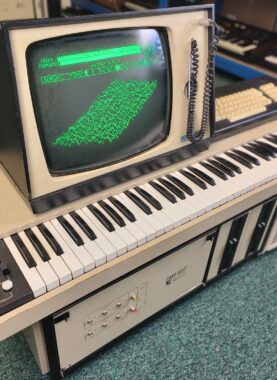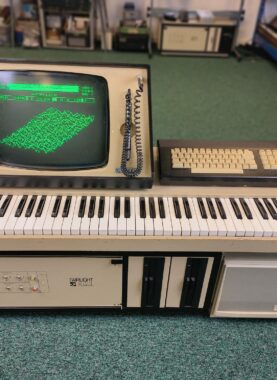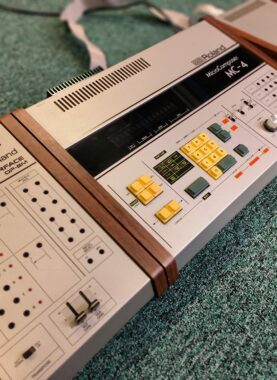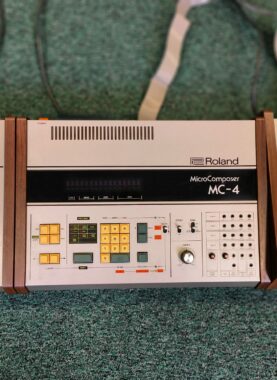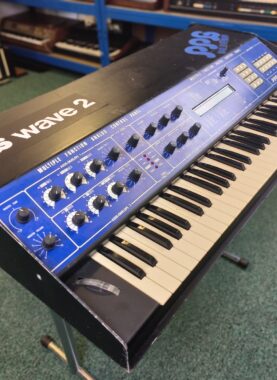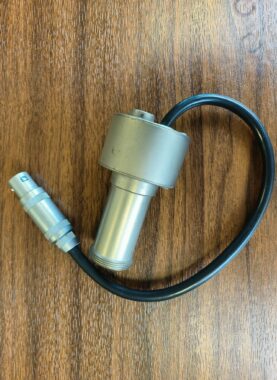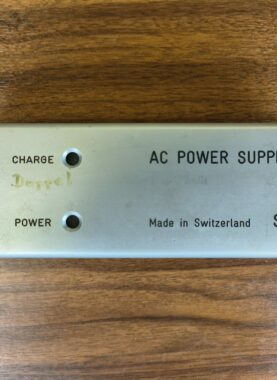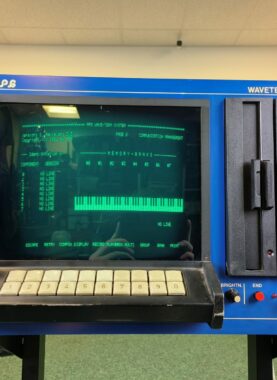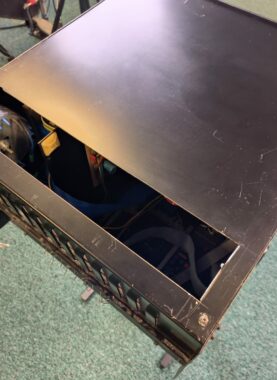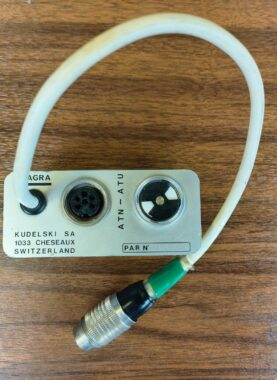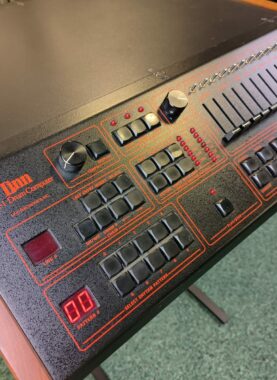Description
The Analog Voltage Interface is a large blue metal case with a slanted front. On the front are eight CV and gate jack inputs, one for each of the eight voice channels of the Emulator I. Below these inputs are eight toggle switches that control the mode of each channel. The three modes are:
– Test – manually switches the channel CV to E1.
– Internal – turns off the test CV
– External – external gates control the E1
The Blue Box is connected to the Emulator I via a standard RS232 serial cable. The connector is located on the back of the AVI. The voltage per octave can be adjusted by a trimmer accessible through a small hole in the front panel of the AVI. The AVI must be used with the correct emulator OS software, otherwise the samples may be damaged.
AVI software The special Emulator OS version EP8SA.0308 for the AVI box provides some additional features. This software is available in the Emulator Facebook group.
– Mono Mode – monophonic mode on channel 1
– Disable/Enable – turns AVI control on and off
– Gate Test LED – GET SEQ LED shows key on/off
– Scan Rate Control – speeds up the response time to CV’s
Technology The AVI has a Z80 microprocessor running at 5 MHz and contains a 2716 EPROM for the simple operating system. Control voltages are read from an ADC0809 8-bit analog-to-digital converter. The AVI software behaves as if it were the internal sequencer, so this functionality is disabled in the emulator. The keyboard is still active, but it is best to turn it off with the Scan Rate Control, as the response to CV/Gates improves by 10 ms to 3 – 4 ms.
